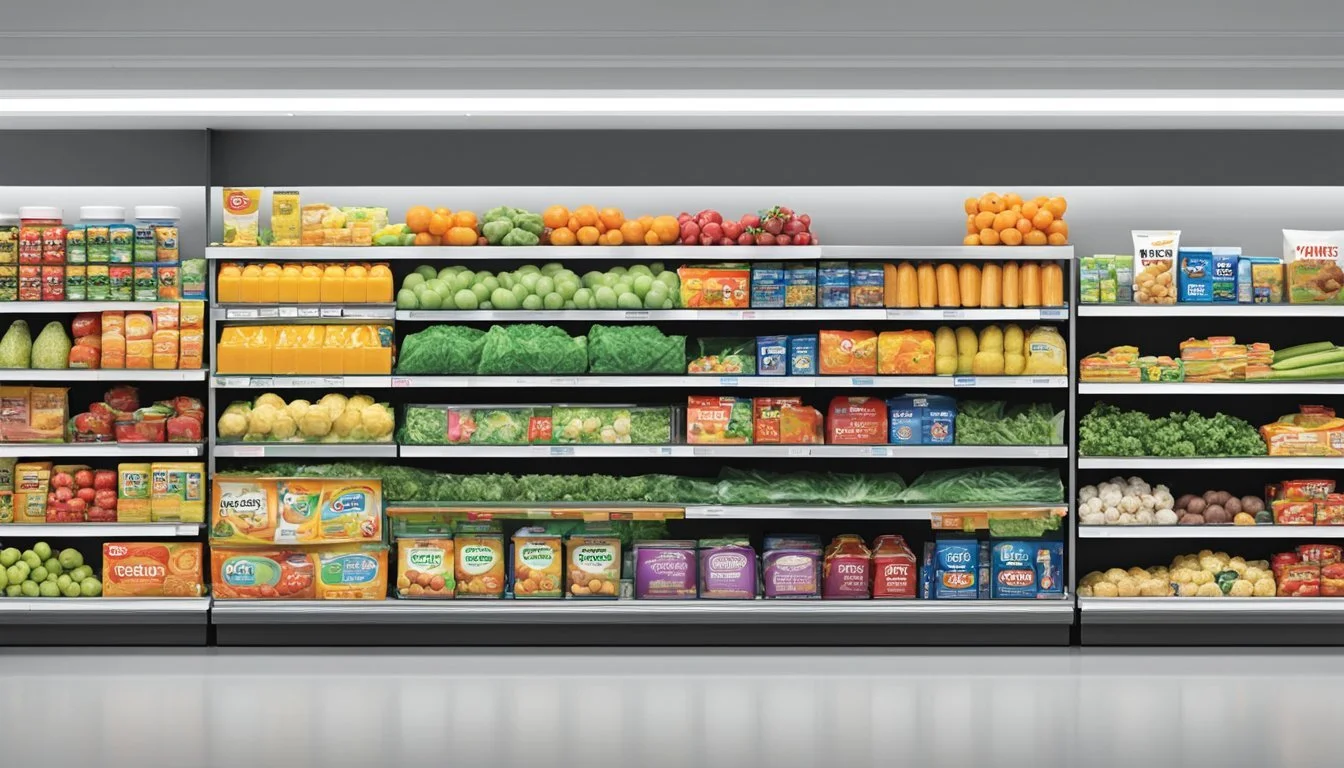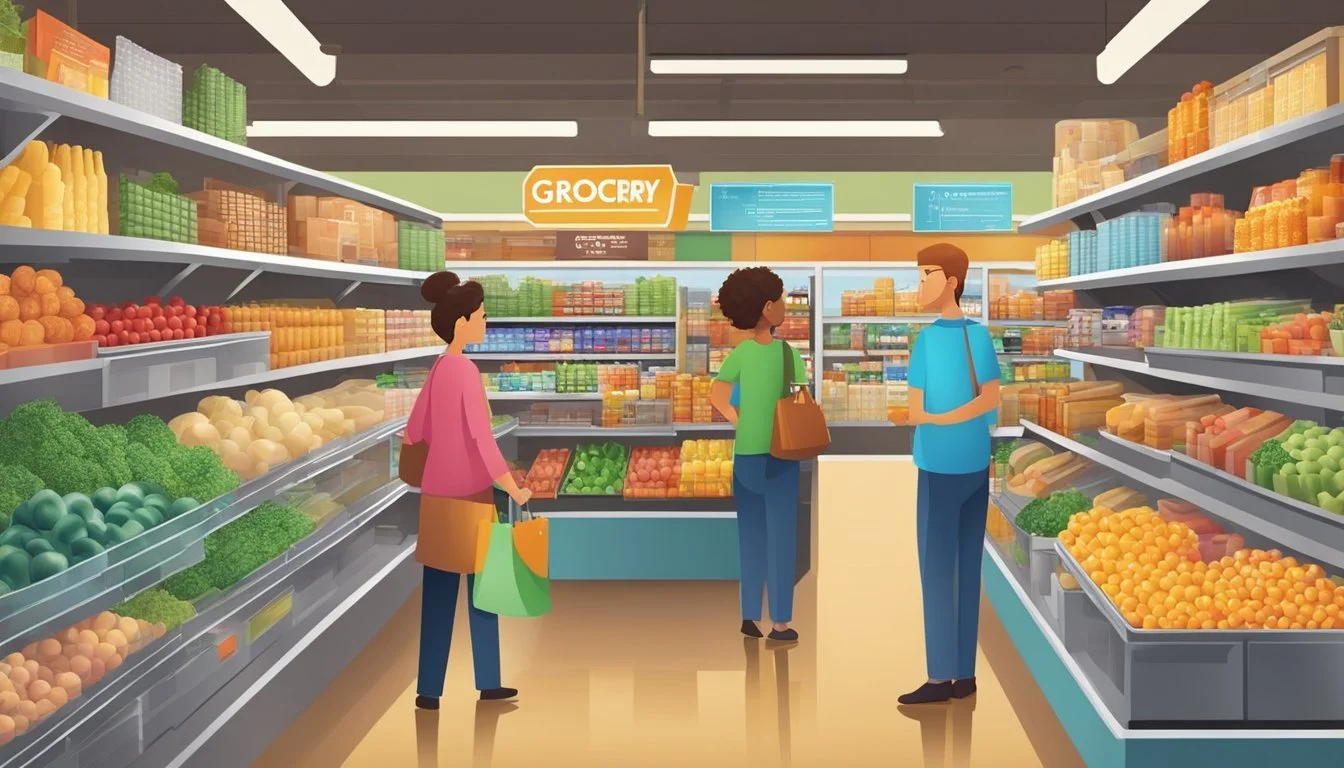Target vs Ingles Markets
A Comprehensive Comparison of Price, Selection, and Service
When it comes to grocery shopping, consumers are always on the lookout for the best combination of quality and value. Target and Ingles Markets are two popular options that cater to different shopping preferences and needs. While Target offers a wider range of products beyond groceries, Ingles Markets focuses primarily on food items and local produce.
Target generally provides competitive prices on groceries, especially with its private label brands, while Ingles Markets often emphasizes fresh, locally-sourced products. Both stores have their strengths, with Target appealing to those who prefer one-stop shopping and Ingles Markets attracting customers who prioritize a traditional grocery store experience.
Choosing between Target and Ingles Markets ultimately depends on individual priorities. Target may be more suitable for shoppers seeking convenience and a broader product selection, whereas Ingles Markets might appeal to those who value a dedicated grocery store atmosphere and local connections.
Overview of Grocery Store Landscapes
The grocery store industry has undergone significant changes in recent years, with diverse players competing for market share. Traditional supermarkets face increasing competition from discount chains, big-box retailers, and specialty stores.
Pros and Cons of Target and Ingles Markets
Target offers a wide selection of grocery items alongside other retail products. Its strengths include competitive pricing, store brand options, and convenient one-stop shopping. Target's grocery sections often feature fresh produce, meat, and bakery items.
Ingles Markets provides a more traditional grocery experience. They excel in offering a broad range of name-brand products and typically have larger stores. Ingles often includes in-store pharmacies, delis, and bakeries.
Both chains have their drawbacks. Target's grocery selection may be limited compared to dedicated supermarkets. Ingles Markets may have higher prices on some items compared to discount chains.
The Evolution of Grocery Chains
Grocery chains have adapted to changing consumer preferences and market pressures. Many have expanded their private-label offerings to compete with discount retailers like Aldi and Lidl.
Technology has played a significant role in this evolution. Chains now offer online ordering, home delivery, and curbside pickup services. Self-checkout lanes and mobile payment options have become common features.
Warehouse clubs like Costco have gained market share by offering bulk purchases at discounted prices. Specialty stores like Whole Foods and Trader Joe's have carved out niches with organic and unique product offerings.
Traditional chains like Kroger and Safeway have responded by enhancing their store experiences and expanding their own specialty and organic selections. The industry continues to evolve as chains seek to differentiate themselves and meet diverse consumer needs.
Price Comparison and Budgeting
Target and Ingles Markets employ different pricing strategies, impacting shoppers' budgets. Understanding these differences and implementing smart shopping tactics can lead to significant savings on grocery bills.
Understanding Grocery Store Pricing
Target often uses a mix of everyday low prices and rotating sales to attract customers. They frequently offer discounts on common items through their Target Circle program. Ingles Markets, being a regional chain, may have more flexibility in pricing based on local market conditions.
Both stores use loss leaders - deeply discounted popular items to draw shoppers in. These can include staples like milk, eggs, or bread. It's important to compare prices on your most frequently purchased items at each store to determine which offers better value overall.
Loyalty programs play a role in pricing. Target's RedCard provides a 5% discount on purchases, while Ingles Advantage Card offers personalized deals and fuel rewards.
Strategies for Saving Money on Groceries
Planning is key to maximizing savings at both Target and Ingles Markets. Start by creating a meal plan and shopping list before visiting the store. This helps avoid impulse purchases and ensures you buy only what you need.
Take advantage of digital coupons and store apps. Both retailers offer mobile apps with exclusive deals and easy-to-use digital coupons. Combining these with in-store sales can lead to substantial savings.
Consider buying store brands. Target's Good & Gather and Market Pantry lines often offer quality products at lower prices than name brands. Ingles Markets' Laura Lynn brand provides similar value.
Stock up on sale items with long shelf lives. This strategy works well for non-perishables and freezer items. Just be sure to compare unit prices to ensure you're getting the best deal.
Be flexible with your shopping. If an item on your list isn't on sale, consider alternatives or wait for a future promotion. This adaptability can help stretch your grocery budget further.
Quality and Selection of Products
Target and Ingles Markets offer distinct product assortments and quality levels. Their approaches to produce, meats, national brands, and store-brand items differ in notable ways that impact the shopping experience.
Produce and Meat Quality Analysis
Target's produce section emphasizes convenience with pre-packaged fruits and vegetables. The quality is generally acceptable, though the selection may be more limited compared to traditional grocers. Target has expanded its fresh food offerings in recent years, but produce is not its primary focus.
Ingles Markets places a stronger emphasis on fresh produce and meats. Their stores typically feature larger produce departments with a wider variety of fruits and vegetables, including some locally-sourced options when available. The meat counters at Ingles often provide a broader selection of cuts and higher-quality meats compared to Target.
Store Brands vs. National Brands
Target's private label brands, including Good & Gather and Market Pantry, offer competitive quality at lower price points across many product categories. These store brands cover a wide range of items, from pantry staples to snacks and beverages. Target also carries a solid selection of national brands.
Ingles Markets stocks a comprehensive array of national brands. Their store brand, Laura Lynn, provides budget-friendly alternatives across various product categories. While not as extensive as Target's private label offerings, Laura Lynn products are generally well-regarded for their quality and value.
Consumer Experience
Target and Ingles Markets offer distinct shopping experiences that shape customer perceptions and loyalty. Both chains strive to meet consumer needs, but differ in their approaches to service, product selection, and store atmosphere.
Shopping Experience from Customers' Perspective
Target provides a bright, modern shopping environment with wide aisles and clearly marked sections. Customers appreciate the store's clean layout and diverse product range. Self-checkout options and knowledgeable staff contribute to a smooth experience.
Ingles Markets focuses on a community-oriented approach. Their stores often feature local products and a more traditional grocery layout. Shoppers value the personalized service and familiar faces of long-term employees.
Both chains offer loyalty programs. Target's REDcard provides discounts and free shipping for online orders. Ingles Advantage Card offers personalized deals and fuel savings at Ingles Gas Express stations.
Brand Loyalty and Customer Satisfaction
Target has built a strong brand identity, attracting a loyal following among younger demographics and families. Their "Expect More. Pay Less." slogan resonates with budget-conscious shoppers seeking quality products.
Ingles Markets cultivates loyalty through community involvement and regional appeal. Their focus on fresh produce and local goods creates a connection with customers who value supporting area businesses.
Customer surveys indicate high satisfaction rates for both chains. Target receives praise for its trendy private-label brands and convenient shopping experience. Ingles Markets earns positive ratings for its friendly service and product quality, particularly in meat and produce departments.
Accessibility and Convenience
Target and Ingles Markets differ significantly in their accessibility and convenience offerings. Both chains have distinct approaches to store locations and online shopping options.
Store Locations and Convenience
Target operates over 1,800 stores across the United States, primarily in urban and suburban areas. Many Target locations are large-format stores, offering a wide range of products beyond groceries. Ingles Markets, in contrast, has a more regional focus with approximately 200 stores concentrated in the southeastern United States. Ingles stores are typically found in smaller towns and rural areas.
Target's urban presence makes it more accessible for city dwellers, while Ingles caters to shoppers in less densely populated regions. Target stores often feature cafe areas and in-store Starbucks locations, adding convenience for shoppers. Ingles Markets frequently include fuel centers, providing an added benefit for customers in car-dependent areas.
Online Shopping and Grocery Delivery Options
Target has invested heavily in its digital infrastructure, offering robust online shopping and delivery services. Customers can use the Target app or website to place orders for home delivery or in-store pickup. Target's same-day delivery service, powered by Shipt, is available in many areas.
Ingles Markets has a more limited online presence. While they offer an online shopping platform, their delivery and pickup options are not as widespread or sophisticated as Target's. Ingles' e-commerce capabilities vary by location, with some stores offering curbside pickup and limited delivery services.
Target's partnership with Shipt gives it an edge in the grocery delivery space. This service allows customers to receive their orders within hours. Ingles Markets, being a smaller regional chain, has not yet matched the scale of Target's delivery network.
Innovations and Market Trends
Target and Ingles Markets are adapting to technological advancements and evolving consumer preferences. Both retailers are implementing new strategies to stay competitive in the rapidly changing grocery landscape.
Impact of Technology on Shopping
Target has invested heavily in digital innovations to enhance the customer experience. The retailer's mobile app allows shoppers to create lists, find in-store item locations, and access exclusive deals.
Self-checkout kiosks and contactless payment options have become standard in many Target locations. These technologies reduce wait times and provide a more convenient shopping experience.
Ingles Markets has also embraced technology, albeit at a slower pace. The company has introduced online ordering and curbside pickup services at select stores. This allows customers to shop from home and collect their groceries without entering the store.
Emerging Trends in the Grocery Industry
Private label products are gaining popularity among budget-conscious consumers. Target's Good & Gather brand offers high-quality alternatives to name-brand items at competitive prices.
Prepared foods are becoming a significant focus for both retailers. Target has expanded its selection of ready-to-eat meals and grab-and-go options. This caters to busy shoppers seeking convenient meal solutions.
Ingles Markets has responded by enhancing its deli and bakery departments. The retailer now offers a wider variety of freshly prepared meals and baked goods.
Sustainability initiatives are also shaping the grocery industry. Target has committed to sourcing more sustainable products and reducing waste. Ingles Markets has implemented energy-efficient practices in its stores and distribution centers.
Comparative Case Studies
Regional preferences and consumer research reveal important insights into how Target and Ingles Markets compare. Local market dynamics and national surveys highlight key differences in pricing, selection, and shopping experiences between these grocery chains.
Regional Preference and Local Chains
Target enjoys strong brand recognition nationwide, while Ingles Markets dominates in the southeastern United States. In the Washington area, a price survey found local chains like Harris Teeter often outperformed Target on grocery costs. East coast shoppers frequently choose regional favorites over national brands.
Ingles Markets thrives in smaller communities, tailoring its offerings to local tastes. Their store brands cater specifically to southeastern palates. Target's grocery selection aims for broad appeal across diverse markets.
National Surveys and Consumer Research
A comprehensive price comparison of major grocery chains revealed Target's prices were 12% below average, while many local chains fell in the middle range. However, Target's limited fresh produce selection scored lower in quality assessments.
Consumer satisfaction surveys indicate Ingles Markets excels in customer service and community engagement. Target earned high marks for its clean, well-organized stores and convenient locations. Rochester-based research found shoppers appreciated Target's one-stop shopping experience but preferred specialized grocers for certain categories like meat and bakery items.







